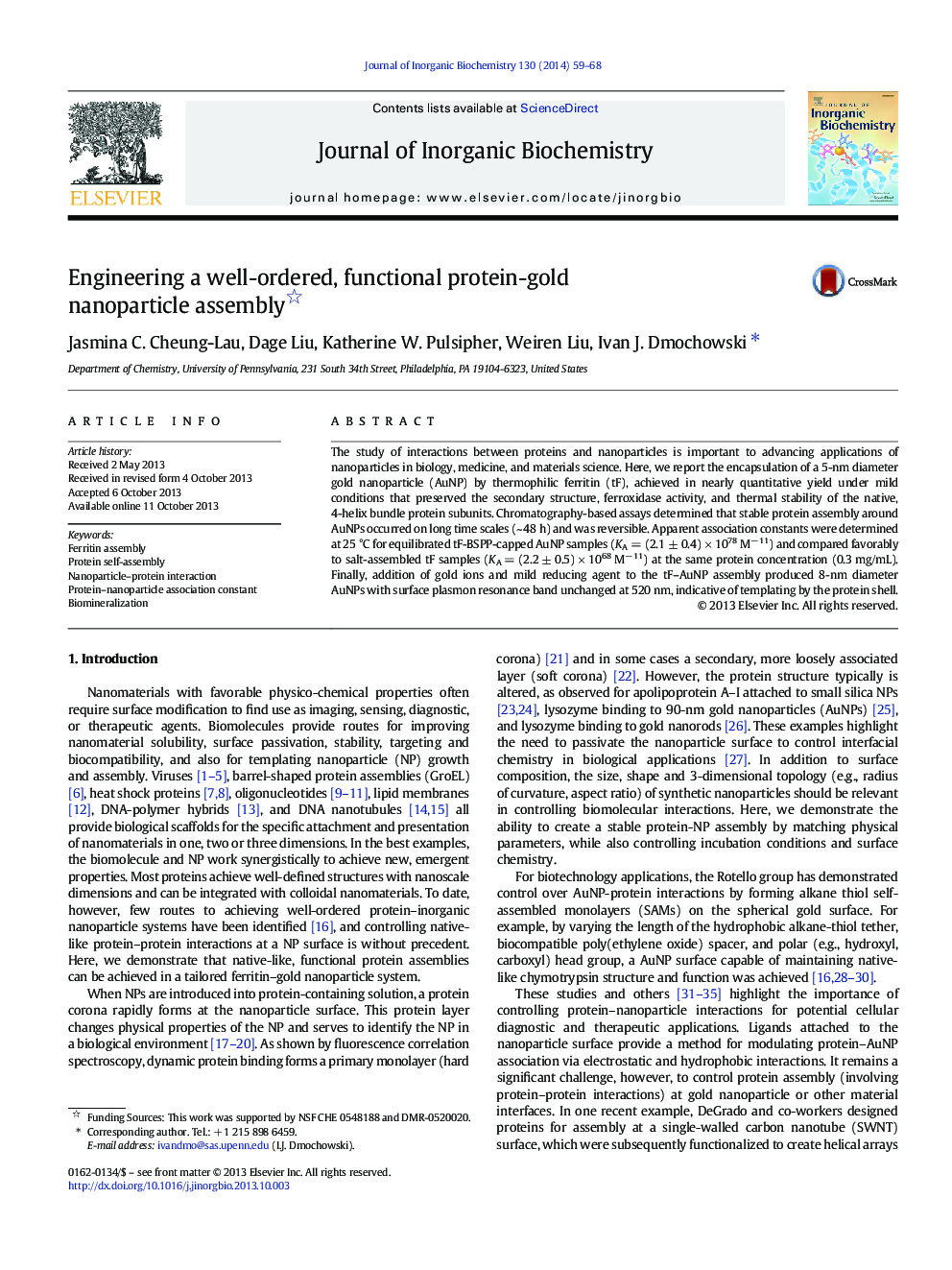| Article ID | Journal | Published Year | Pages | File Type |
|---|---|---|---|---|
| 1316289 | Journal of Inorganic Biochemistry | 2014 | 10 Pages |
•Synthesis: Ferritin-5-nm gold nanoparticle assembly occurred at room temperature within 48 h.•Characterization: Protein-AuNP maintained secondary structure and passaged sizing chromatography.•Functional Assays: Protein preserved ferroxidase activity and templated gold nanoparticle growth.•Overview: This approach creates stable protein assemblies at metallic colloidal interfaces.
The study of interactions between proteins and nanoparticles is important to advancing applications of nanoparticles in biology, medicine, and materials science. Here, we report the encapsulation of a 5-nm diameter gold nanoparticle (AuNP) by thermophilic ferritin (tF), achieved in nearly quantitative yield under mild conditions that preserved the secondary structure, ferroxidase activity, and thermal stability of the native, 4-helix bundle protein subunits. Chromatography-based assays determined that stable protein assembly around AuNPs occurred on long time scales (~ 48 h) and was reversible. Apparent association constants were determined at 25 °C for equilibrated tF-BSPP-capped AuNP samples (KA = (2.1 ± 0.4) × 1078 M− 11) and compared favorably to salt-assembled tF samples (KA = (2.2 ± 0.5) × 1068 M− 11) at the same protein concentration (0.3 mg/mL). Finally, addition of gold ions and mild reducing agent to the tF–AuNP assembly produced 8-nm diameter AuNPs with surface plasmon resonance band unchanged at 520 nm, indicative of templating by the protein shell.
Graphical abstractThermophilic ferritin 4-helix bundle dimer assembles into 24mer in presence of high salt, but appropriately sized gold nanoparticle can also induce room-temperature assembly, with nanoparticle encapsulated inside protein shell.Figure optionsDownload full-size imageDownload as PowerPoint slide
